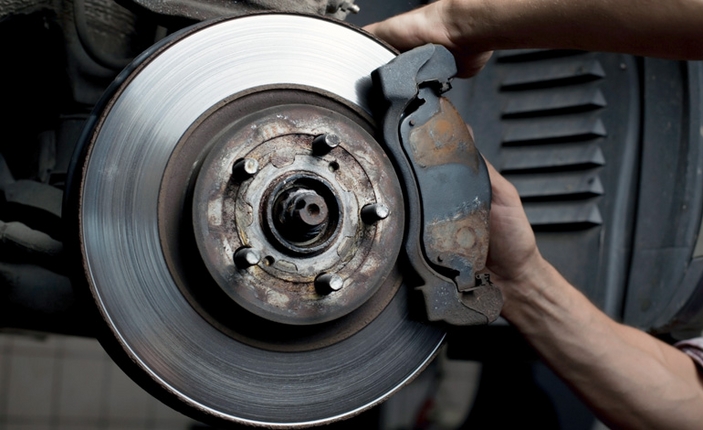What’s the Difference Between Brake Pads & Rotors?
When you press on your brake pedal, your car or truck slows down. You likely do this dozens or hundreds of times whenever you drive. However, if you are like many other drivers, you may not know much about how your brakes work. You may know that you change your brake pads from time to time and occasionally service your rotors. But what is the difference between brake pads and rotors?
How Brakes Work
Most modern passenger vehicles use disc brakes. This type of brake has discs spinning with the wheels that are clasped by the part of the brakes connected to the frame of the car. This slows the spinning of the wheels until the vehicle stops.
There are five major components of this system: the rotors, pads, calipers, lines and fluid cylinders. Of course, most brakes have far more components than these. However, those are the important ones for understanding how brakes work.
Brake Rotors
The rotors in the brakes are the spinning components. They are connected to the wheel. Therefore, slowing the rotation of the rotors directly slows the rotation of the wheels.
There is a rotor per brake. Most modern cars have four brakes (one per wheel). The front and rear set of brakes may be different sizes.
Typically, larger rotors perform better because they have larger contact surfaces and can absorb heat more easily. As you brake your car or truck, the friction causes the brakes to heat up and lose effectiveness (called brake fade). Larger rotors will experience less of this. Additionally, advanced materials and designs can help rotors better deal with heat. Brake rotor price often depends on size and materials.
Brake Pads
Brake pads are on the other side of the braking equation. They are work hand-in-hand with the brake caliper. The latter fits around the brake rotor and squeezes down on it to slow its rotation. Brake pads are fit inside the caliper and are the part that directly contacts the brake rotor, providing a good surface for smoothly and effectively slowing the rotor’s rotation.
Your brake pads need to be changed regularly, typically on major services roughly every 15,000 miles. They are designed to be consumable because they absorb a lot of the heat and pressure from the braking process. Therefore, they tend to wear down more quickly than any other component.
Many brake pads for cars have built-in metal indicators. These will create an unpleasant screeching sound when your brake pads need to be replaced. Additionally, you can measure your brake pads. Typically, you need to replace them when they are down to three millimeters of material. However, you should check your owner’s manual and brake pad information for specific measurements.
Get Started
Learn more about how your brakes work so that you can maintain them yourself. When you understand the system, you can more easily teach yourself how to do your own brake pad and rotor changes. Additionally, you can consider upgrading to superior, aftermarket alternatives. Make a trip to your favorite auto parts store today to get the tools you need to change your pads.

